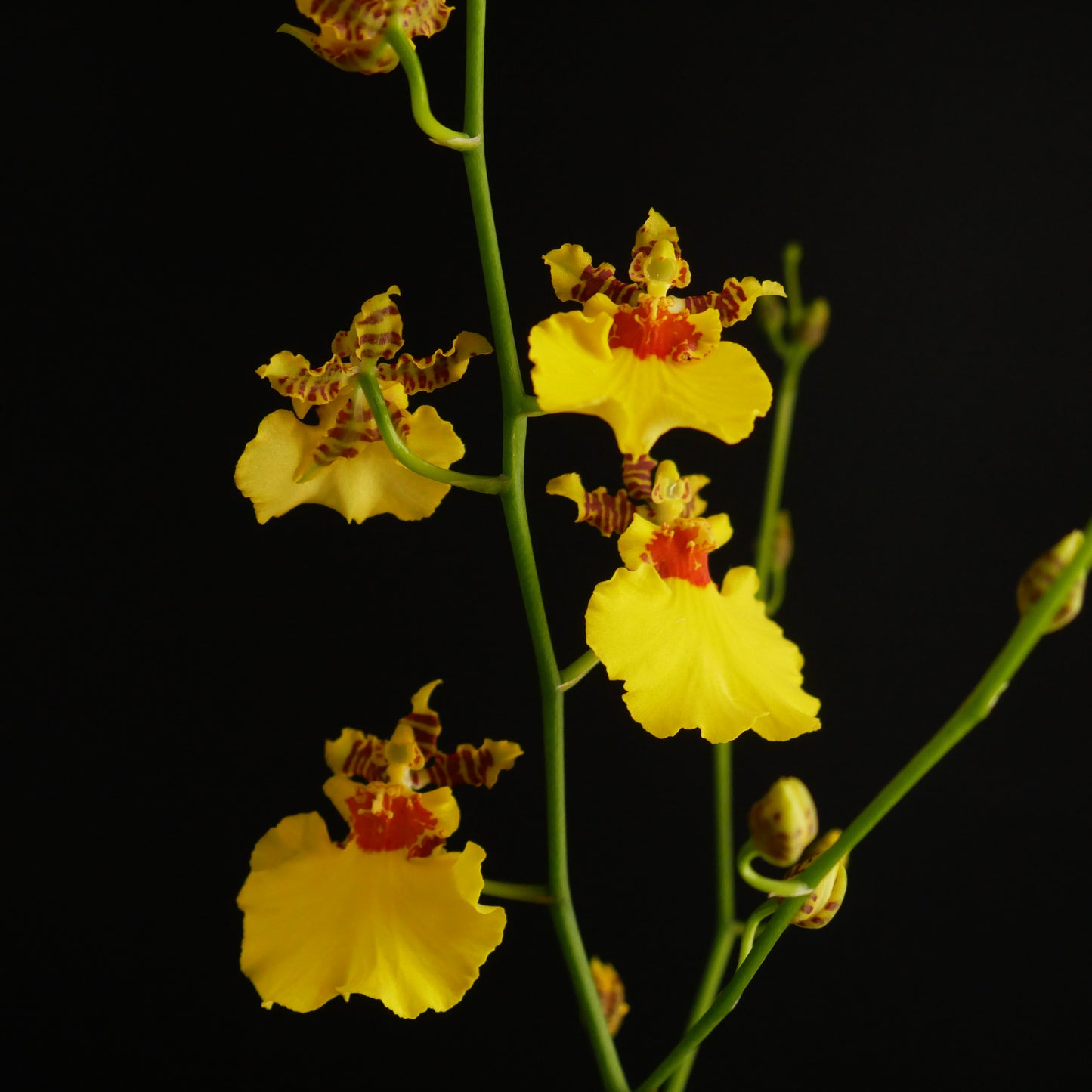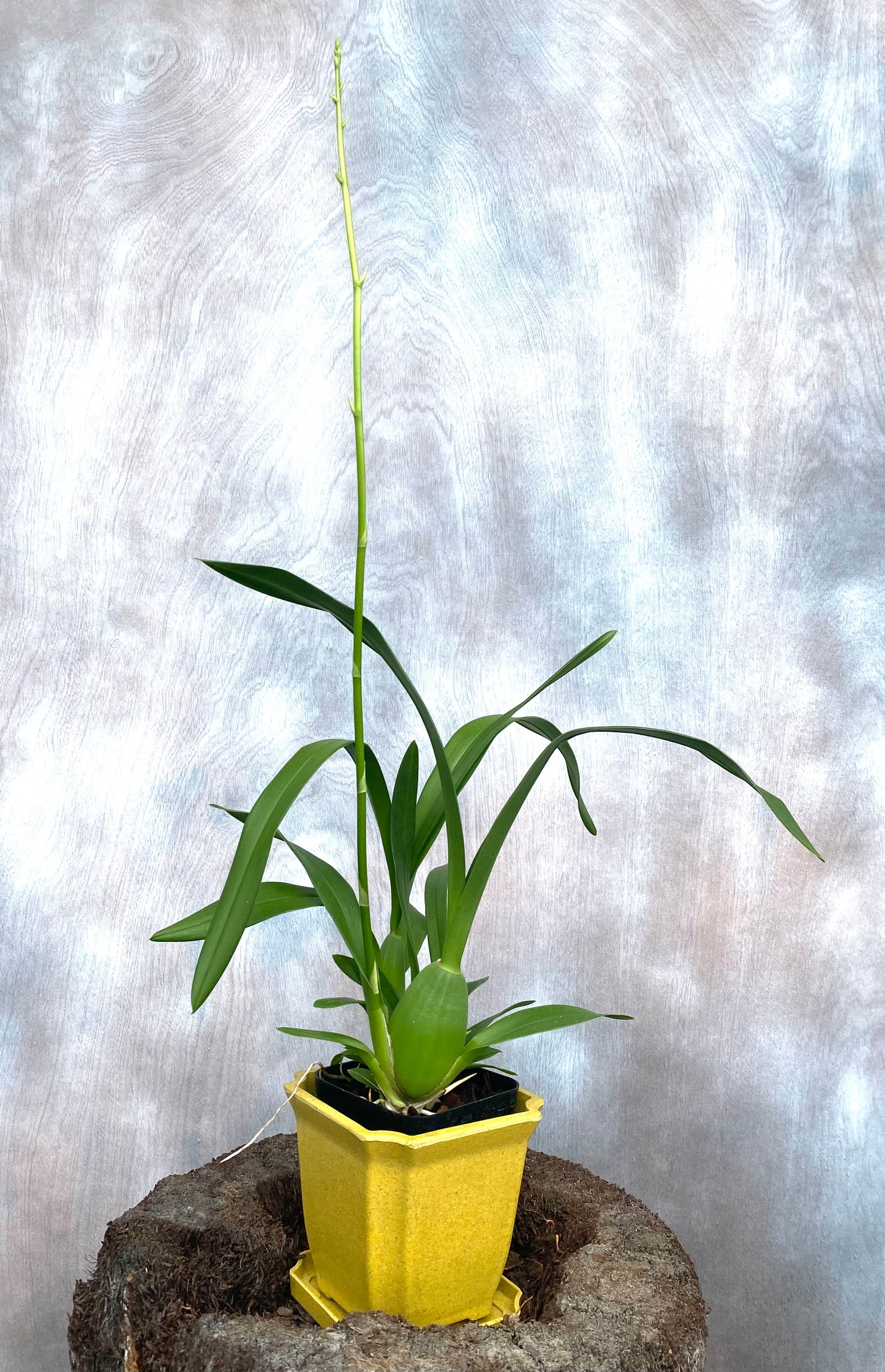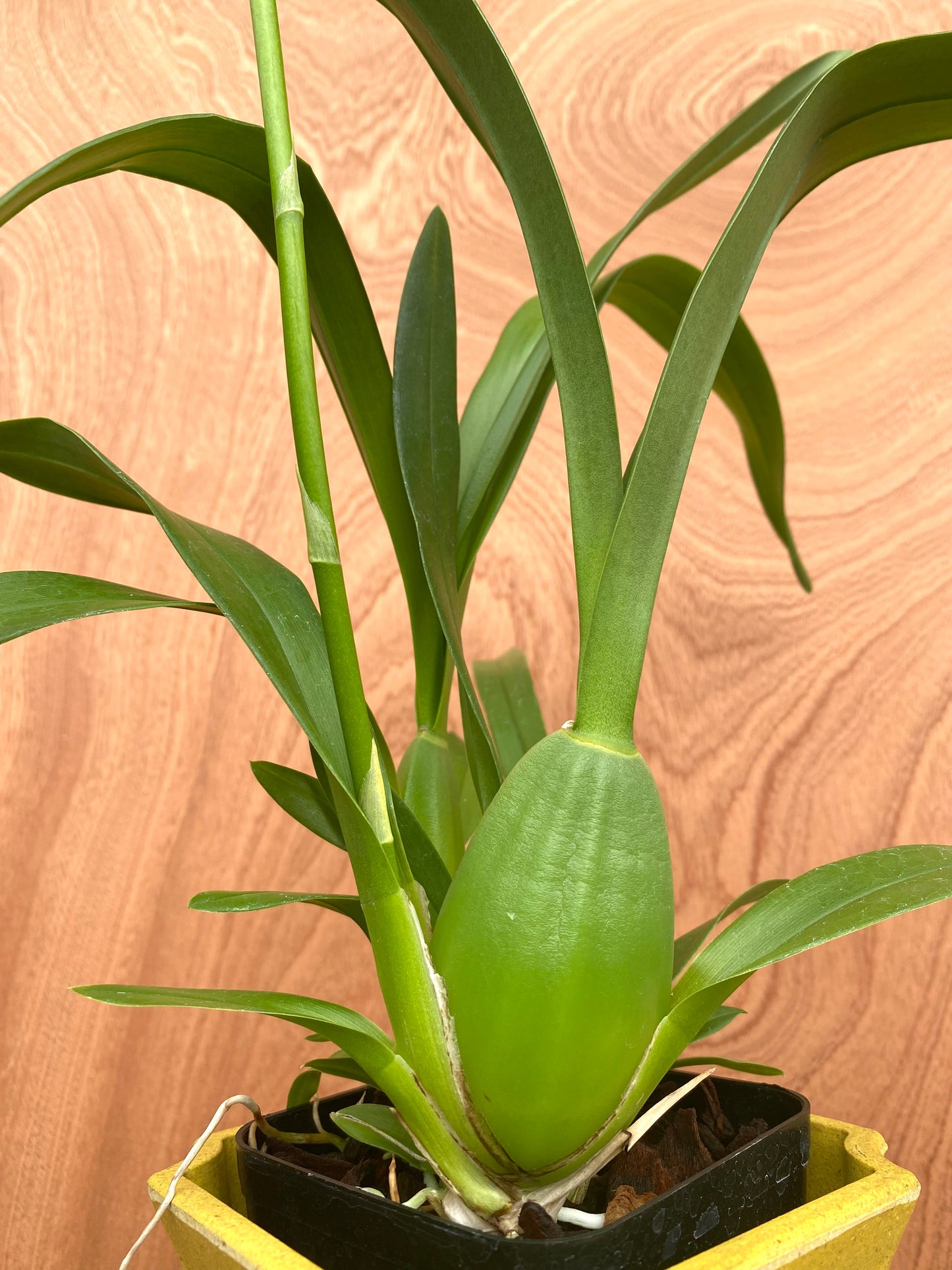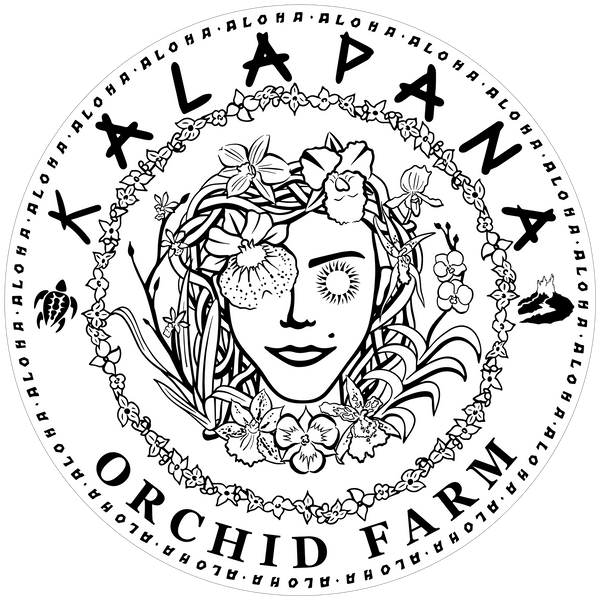Kalapana Orchid Farm
Oncidium Gower Ramsey
Oncidium Gower Ramsey
Couldn't load pickup availability
The Oncidium Gower Ramsey is celebrated for its spectacular, cascading sprays of brilliant yellow blooms. Often called a "dancing lady" orchid, each flower, with its full, ruffled skirt-like lip, seems to jitterbug at the slightest breeze. The center of each 1.5-in. bloom is typically marked with a delicate touch of reddish-brown, adding a bit of spice to its otherwise sunny disposition. The flower spikes are true showstoppers, branching and arching to lengths of 30-38 in., creating a waterfall of vibrant color.
This plant is a handsome one even when not in bloom. It produces plump, ovoid pseudobulbs, which are essentially water-storage tanks for the plant. From the top of each pseudobulb, one or two long, strap-like leaves emerge, growing up to 2 ft. in length. The foliage is a bright, healthy green, forming a robust clump over time.
This popular hybrid is a cross between Oncidium Goldiana and Oncidium Guinea Gold. To really understand this plant, we have to go back to its roots. Oncidium Goldiana is a primary hybrid, a direct cross between two species: Oncidium flexuosum and Oncidium sphacelatum.
Oncidium flexuosum hails from a wide swath of South America, including Brazil, Argentina, Paraguay, and Uruguay. It's an adaptable species, found from elevations near sea level up to around 2,600 ft. It typically grows as an epiphyte in coastal mountains and along inland streams, enjoying a warm to hot climate. Oncidium sphacelatum has a similarly broad native range, from Mexico down through Central America and into northern South America. It's also an epiphyte, and occasionally a lithophyte (growing on rocks), and is known for producing impressively long, branching flower spikes.
The Gower Ramsey certainly inherited the best traits from its ancestors. It produces long, arching, and often branched inflorescences that can reach over 3 ft. in length, covered in dozens of small, bright yellow flowers. Each flower is about 1.5 in. across. The sepals and petals are small and often have some subtle brown markings, but the real showstopper is that large, canary-yellow lip. The sheer number of flowers creates a spectacular "shower of gold" effect. While some Oncidium are fragrant, Gower Ramsey is generally not known for a strong scent. One of its cultivars, Onc. Gower Ramsey 'Lemon Heart', has received an Award of Merit (AM) from the American Orchid Society for its particularly fine form and vibrant color.
The plant itself is a sympodial orchid, meaning it grows from a creeping rhizome, producing new pseudobulbs each year. The pseudobulbs are ovoid and somewhat compressed, topped with one or two long, strap-like leaves. These leaves are a vibrant green and can be up to 2 ft. long. A healthy, mature plant can be quite substantial, with a total height, including the flower spike, reaching up to 36 in. It has a robust and vigorous growth habit, quickly forming a multi-pseudobulb specimen. Blooming can occur at various times of the year, but it is most common from spring through fall.
Care Instructions
Light: Provide bright, indirect light, similar to what you would find under a sheer curtain in an east-facing window. Avoid direct, intense sunlight, which can burn the leaves.
Water: Water generously, allowing the potting medium to become almost dry before watering again. Do not let the plant stand in water. Good drainage is critical.
Temperature: Prefers intermediate to warm conditions. Aim for daytime temperatures between 70-85°F and a slight drop at night to 55-65°F to encourage blooming.
Humidity: A relative humidity of 50-70% is ideal. In drier environments, placing the pot on a tray of wet pebbles can help increase local humidity.
Potting Medium: Use a coarse, well-aerated orchid mix. A blend of fir bark, charcoal, and perlite works well to provide the drainage and air circulation that the roots need. Repotting is generally needed every one to two years.
Grown in 4" pots. Buy two and save $14!
Share






